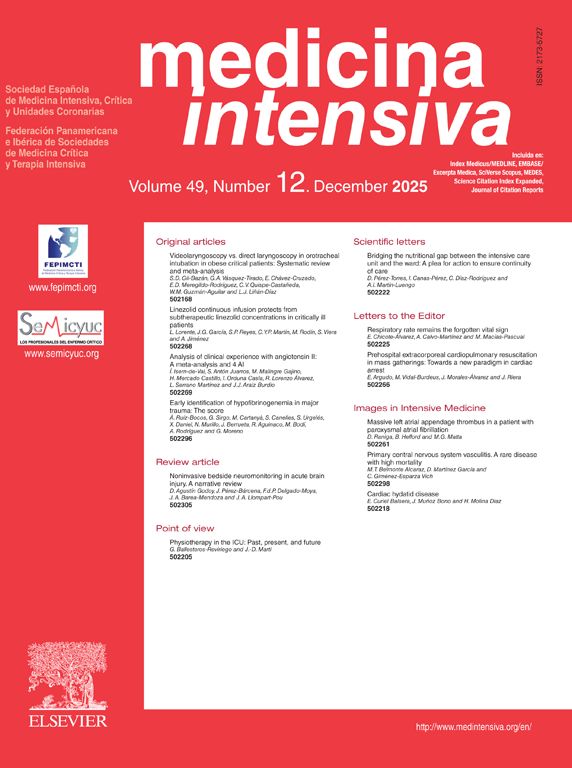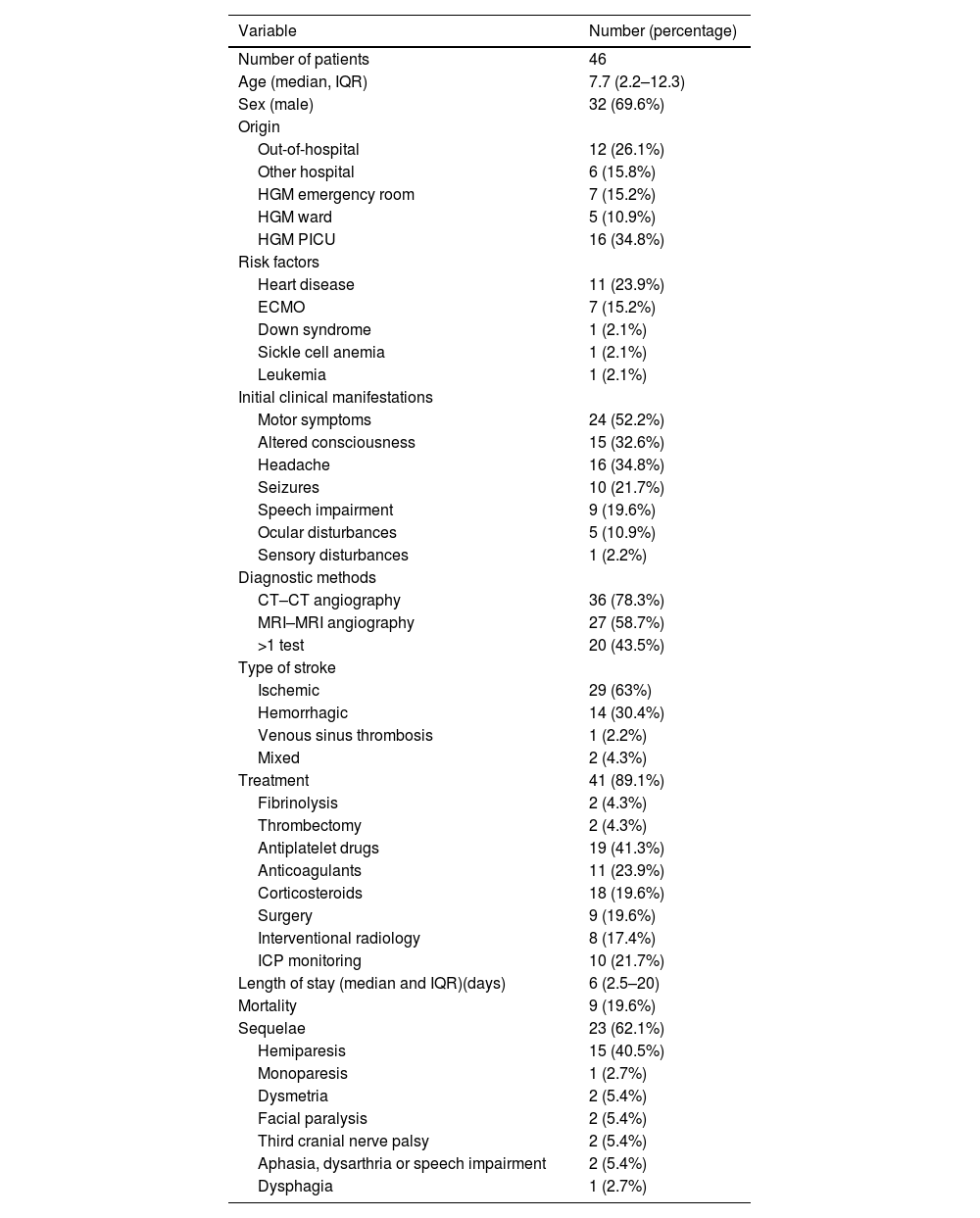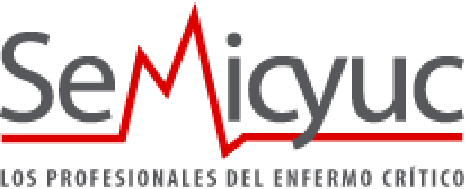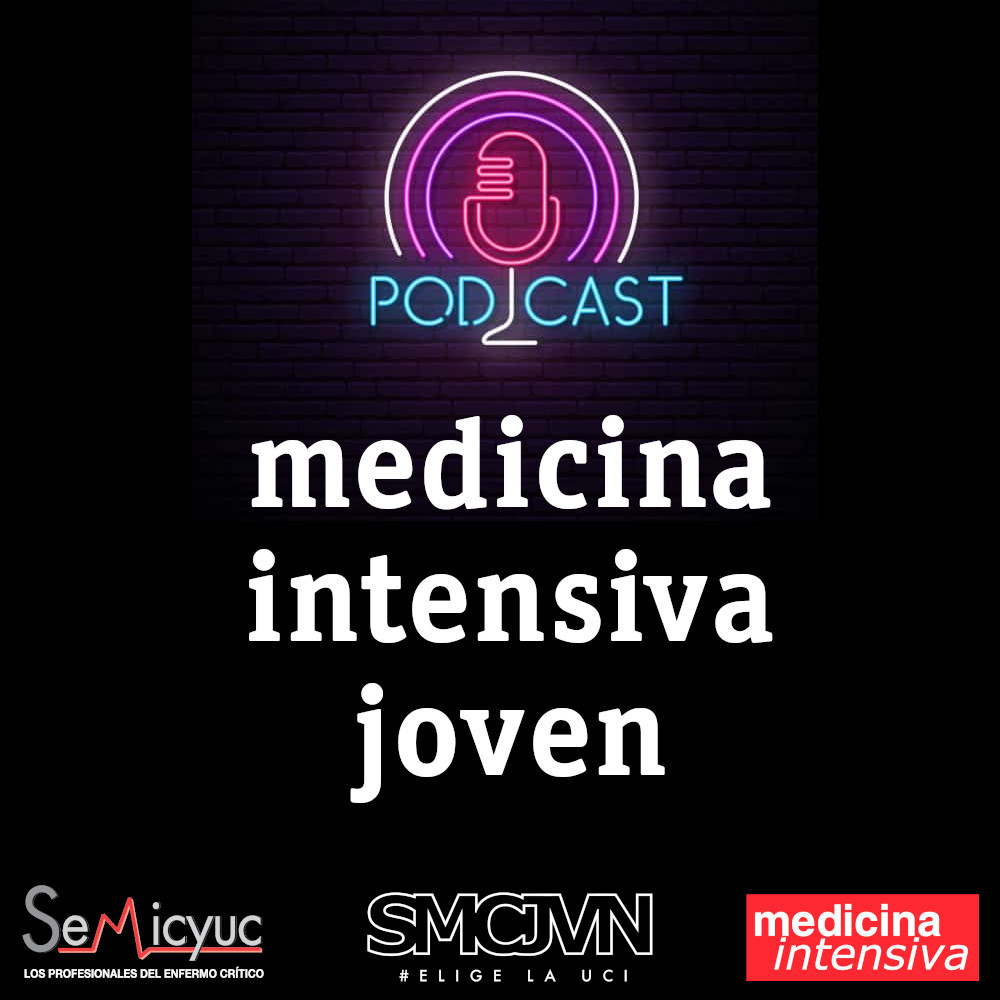To analyze the frequency, causes, risk factors, mortality and sequelae of stroke in children admitted to the pediatric intensive care unit (PICU).
DesignSingle-center retrospective observational study based on a prospective database.
SettingPediatric intensive care unit.
PatientsChildren between one month and eighteen years of age admitted to the PICU and diagnosed with stroke were included.
Main variables of interestEpidemiological, clinical, diagnostic and treatment data, sequelae and mortality were recorded.
InterventionsNone.
Results46 patients were studied, of whom 29 (63%) had an ischemic stroke, 14 (30.4%) a hemorrhagic stroke, 1 (2.2%) venous sinus thrombosis and 2 (4.3%) mixed stroke. 11 patients (23.9%) had heart disease and 7 (15.2%) were treated with extracorporeal membrane oxygenation (ECMO) or ventricular assist. 8.6% of patients were treated with fibrinolysis or thrombectomy. 9 patients (19.6%) died. Patients with heart disease and those treated with ECMO had a higher mortality rate. 23 children, 62.1% of survivors, suffered sequelae at discharge. The most frequent sequelae were hemiparesis. Sequelae were significantly more frequent in patients who presented with motor symptoms (76.2%) (p < 0.001).
ConclusionsThe frequency of ischemic stroke in pediatric patients is higher than that of hemorrhagic stroke. Pediatric patients who suffer a stroke have a high mortality rate and a high rate of sequelae. Patients with heart disease and those treated with ECMO are those who present stroke most frequently and have a higher mortality rate.
Analizar la frecuencia, las causas, los factores de riesgo, la mortalidad y las secuelas del ictus en los niños ingresados en cuidados intensivos pediátricos (UCIP).
DiseñoAnálisis retrospectivo unicéntrico observacional sobre una base de datos prospectiva.
ÁmbitoServicio de cuidados intensivos pediátricos.
PacientesSe incluyeron los niños entre un mes y dieciocho años ingresados en la UCIP y diagnosticados de ictus.
Variables de interés principalesSe registraron los datos epidemiológicos, clínicos, de diagnóstico y tratamiento, secuelas y mortalidad.
IntervencionesNinguna.
ResultadosSe estudiaron 46 pacientes, de los cuales 29 (63%) presentaron un ictus isquémico, 14 (30,4%) un ictus hemorrágico, 1 (2,2%) trombosis de senos venosos y 2 (4,3%) ictus mixto. Once pacientes (23,9%) sufrían una cardiopatía y 7 (15,2%) estaban sometidos a tratamiento con oxigenación con membrana extracorpórea (ECMO) o asistencia ventricular. El 8,6% de los pacientes fueron tratados con fibrinólisis o trombectomía. Nueve pacientes (19,6%) fallecieron. Los pacientes con cardiopatía y los tratados con ECMO presentaron mayor mortalidad. Veintitrés niños, el 62,1% de los supervivientes, sufrieron secuelas al alta. La secuela más frecuente fue la hemiparesia. Las secuelas fueron significativamente más frecuentes en pacientes que comenzaron la clínica con síntomas motores (76,2%) (p < 0,001).
ConclusionesLa frecuencia del ictus isquémico en pacientes pediátricos es mayor que la del ictus hemorrágico. Los pacientes pediátricos que sufren un ictus tienen una elevada mortalidad y una alta tasa de secuelas. Los pacientes con cardiopatía y los tratados con ECMO son los que presentan ictus con mayor frecuencia y tienen mayor mortalidad.
Stroke is a neurological disorder of sudden onset and of vascular origin due to ischemia or hemorrhage; it causes brain damage, with symptoms that vary depending on the area affected.1 The incidence of stroke in children is much lower than in adults, except in neonates,1–4 with approximately two cases per 100,000 children outside the neonatal period.1–4
There are several types of stroke: ischemic (decreased blood flow caused by arterial occlusion or stenosis), hemorrhagic (caused by vascular rupture resulting in cerebral hemorrhage), mixed (ischemic stroke that becomes hemorrhagic), and venous sinus thrombosis.
Outside the neonatal period, the major risk factors for ischemic stroke in children are sickle cell anemia, cerebral artery disease, heart disease, prothrombotic hematologic disorders, traumatic brain injury, central nervous system infections, and radiation therapy for head and neck tumors.1,2,4–6
The major risk factors for hemorrhagic stroke in childhood, in addition to trauma, are vascular anomalies, mainly arteriovenous malformations, cerebral cavernous malformations, and coagulopathies, primarily factor VIII deficiency, protein C deficiency and protein S deficiency.1
Mortality from stroke in children ranges from 6% to 18%,1,4,7 and has been decreasing in recent years.4 Approximately 10% of patients will have a recurrent stroke,8 and these patients have higher mortality.9 It was previously thought that the prognosis of children with stroke was better than that of adults, but some authors have found that younger children have a poorer prognosis than older children.10
Between 35%–60% of all surviving patients suffer neurological sequelae,1 the most common being epilepsy and motor deficits,11,12 followed by cognitive sequelae of speech and hearing.11
Studies in adults have shown that early diagnosis and treatment are key factors in improving the prognosis of stroke patients.13 In recent years, the Pediatric Stroke Code has been developed in the Community of Madrid (Spain), with the main objective of organizing and coordinating the care of stroke patients to ensure early diagnosis and treatment.14
Most children with stroke require admission to a Pediatric Intensive Care Unit (PICU),7 and a significant percentage of strokes occur in patients previously admitted to these units.
The Pediatric Stroke Code of the Community of Madrid aims to organize and coordinate the care of children with stroke. There is a common out-of-hospital and in-hospital protocol with a system for diagnosis and early activation of the stroke code, which includes transfer to a referral center for neuroradiological diagnosis and early medical or surgical treatment15 (Annex 1). The reference hospitals are Hospital Gregorio Marañón (HGM), Hospital 12 de Octubre, and Hospital La Paz. Hospital Gregorio Marañón has a prospective data collection system for patients whose stroke code is activated.
The present study was carried out to describe the epidemiology, clinical characteristics, treatment and evolution of a cohort of children with stroke admitted to the PICU of HGM during a five-year period.
Patients and methodsA single-center retrospective observational study was performed using a prospective database. The study was approved by the local Ethics Committee. Children (aged 1 month to 18 years) diagnosed with stroke and admitted to the PICU between 1 January 2019 and 12 December 2023 were included in the study. Parental or guardian consent was obtained. Patients older than 18 years of age and those younger than 1 month were excluded.
The following data were collected: age, sex and medical history, clinical data (initial symptoms, motor symptoms such as loss of strength or mobility of a limb, gait disturbance or instability, seizures, altered consciousness, headache, sensory disturbances, speech disturbances, ocular disturbances), diagnostic methods and treatment (interventional radiology, fibrinolysis, surgery), and outcome (mortality and sequelae). Data were collected from direct interviews with parents or guardians, reports from the hospitals and emergency departments that initially treated the patient, and the clinical history, recorded during the patient’s admission in a dedicated pediatric stroke database. Annex 1 lists the variables of the pediatric stroke code registry.
Data analysis was performed using the SPSS version 25 statistical package (SPSS Inc., Chicago, USA). Discrete variables were expressed as frequencies and percentages. The distribution of continuous variables was assessed using the Kolmogorov–Smirnov test, with reporting of the mean and standard deviation (SD) or median and interquartile range (IQR), depending on the distribution. The chi-squared test (χ2) or Fisher’s exact test was used to compare categorical variables. The Kruskal–Wallis and Mann–Whitney U tests were used to compare continuous variables. Statistical significance was considered for p < 0.05.
ResultsPatient, stroke, treatment and outcome characteristics are shown in Table 1.
Patient characteristics, diagnostic methods, treatment and outcomes.
| Variable | Number (percentage) |
|---|---|
| Number of patients | 46 |
| Age (median, IQR) | 7.7 (2.2–12.3) |
| Sex (male) | 32 (69.6%) |
| Origin | |
| Out-of-hospital | 12 (26.1%) |
| Other hospital | 6 (15.8%) |
| HGM emergency room | 7 (15.2%) |
| HGM ward | 5 (10.9%) |
| HGM PICU | 16 (34.8%) |
| Risk factors | |
| Heart disease | 11 (23.9%) |
| ECMO | 7 (15.2%) |
| Down syndrome | 1 (2.1%) |
| Sickle cell anemia | 1 (2.1%) |
| Leukemia | 1 (2.1%) |
| Initial clinical manifestations | |
| Motor symptoms | 24 (52.2%) |
| Altered consciousness | 15 (32.6%) |
| Headache | 16 (34.8%) |
| Seizures | 10 (21.7%) |
| Speech impairment | 9 (19.6%) |
| Ocular disturbances | 5 (10.9%) |
| Sensory disturbances | 1 (2.2%) |
| Diagnostic methods | |
| CT–CT angiography | 36 (78.3%) |
| MRI–MRI angiography | 27 (58.7%) |
| >1 test | 20 (43.5%) |
| Type of stroke | |
| Ischemic | 29 (63%) |
| Hemorrhagic | 14 (30.4%) |
| Venous sinus thrombosis | 1 (2.2%) |
| Mixed | 2 (4.3%) |
| Treatment | 41 (89.1%) |
| Fibrinolysis | 2 (4.3%) |
| Thrombectomy | 2 (4.3%) |
| Antiplatelet drugs | 19 (41.3%) |
| Anticoagulants | 11 (23.9%) |
| Corticosteroids | 18 (19.6%) |
| Surgery | 9 (19.6%) |
| Interventional radiology | 8 (17.4%) |
| ICP monitoring | 10 (21.7%) |
| Length of stay (median and IQR)(days) | 6 (2.5–20) |
| Mortality | 9 (19.6%) |
| Sequelae | 23 (62.1%) |
| Hemiparesis | 15 (40.5%) |
| Monoparesis | 1 (2.7%) |
| Dysmetria | 2 (5.4%) |
| Facial paralysis | 2 (5.4%) |
| Third cranial nerve palsy | 2 (5.4%) |
| Aphasia, dysarthria or speech impairment | 2 (5.4%) |
| Dysphagia | 1 (2.7%) |
Forty-six patients with a median age of 7.7 years were studied; 32 (69.6%) were males.
The most common type of stroke was ischemic stroke, in 29 patients (63%), followed by hemorrhagic stroke, in 14 patients (30.4%).
Thirty percent of the patients (n = 14) had known risk factors prior to stroke onset. Eleven patients (23.9%) had heart disease, and 7 of them (15.2%) were on extracorporeal membrane oxygenation (ECMO) or ventricular assist. Additional risk factors are listed in Table 1.
In 12 patients (26.1%), the clinical manifestations began in the outpatient setting (26.1%), in 30 cases (64.9%) in HGM, and in 16 patients (34.8%) in the PICU. The most frequent initial manifestations were motor symptoms in 24 patients (52.2%), headache in 16 (34.8%), altered consciousness in 15 (32.6%), and seizures in 10 (21.7%).
The most commonly used diagnostic modalities were CT or CT angiography in 36 patients (78.3%), and MRI or MRI angiography in 27 patients (58.7%). In 20 children (43.5%), more than one imaging test was performed (12 in patients with ischemic stroke and 8 in patients with hemorrhagic stroke).
Overall, 89.1% of the patients (n = 41) received some form of treatment. Of the 29 patients with ischemic stroke, fibrinolysis was performed in two cases and thrombectomy in another two. In 6 patients, fibrinolysis or thrombectomy was not performed because more than 4.5–6 h elapsed between symptom onset and radiologic diagnosis of stroke. In 6 other patients, fibrinolysis or thrombectomy was not performed because they were less than 2 years old and neither thrombectomy nor fibrinolysis was indicated according to the established protocol. In the remaining 13 patients with ischemic stroke, these techniques were not indicated because of the characteristics of the stroke. The indications for fibrinolysis and thrombectomy are summarized in Annex 2.
Nine patients, all with hemorrhagic or mixed stroke, underwent surgical treatment. Eight children required interventional radiology, 7 because of arteriovenous malformations, and one because of an aneurysm.
Nine patients (19.6%) died (7 with ischemic stroke, 1 with hemorrhagic stroke and 1 with mixed stroke). In two patients, the cause of death was directly related to the stroke (massive hemorrhage and cerebral edema with brain death). The rest died of multiorgan failure (5 patients), hypoxemic failure (1 patient) and generalized fungal disease (1 patient).
Table 2 compares the characteristics of the children with stroke who died and those who survived. Patients admitted to the HGM and the PICU, those with heart disease, and those treated with ECMO, presented significantly higher mortality. The age of the children who died, 2.2 years (IQR 1.6–7.9), was significantly lower than that of the survivors, 10.7 years (5.0–13.5) (p = 0.010). Mortality was higher in the patients with ischemic stroke (24.1%) than in the rest (11.7%), but the differences did not reach statistical significance.
Comparison of deceased versus surviving stroke patients.
| Deceased | Survivors | p | |
|---|---|---|---|
| Sex (male) | 6 (66.6%) | 26 (70.2%) | 1 |
| Age (<1 year) | 2 (22.2%) | 3 (8.8%) | 0.250 |
| Heart disease | 5 (55.5%) | 6 (19.3%) | 0.025 |
| ECMO | 6 (66.7%) | 1 (2.7%) | <0.010 |
| Origin HGM | 9 (100%) | 19 (51.3%) | 0.007 |
| Origin PICU | 8 (88.8%) | 8 (21.6%) | <0.010 |
| Ischemic stroke | 7 (77.7%) | 22 (59.4%) | 0.450 |
| Fibrinolysis or thrombectomy | 0 (0%) | 3 (8.1%) | 1 |
HGM: Hospital Gregorio Marañón; PICU: Pediatric Intensive Care Unit.
Bold values are statistically significant.
Twenty-three patients (62.1% of the survivors) had sequelae at discharge, with hemiparesis being the most common problem. The comparison between children with and without sequelae is shown in Table 3. Children with sequelae were more likely to have come from HGM. Children with early motor symptoms had more frequent sequelae than the rest. There were no significant differences in any of the other factors.
Comparison of stroke patients with and without sequelae.
| Sequelae | No sequelae | p | |
|---|---|---|---|
| Sex (male) | 14 (66.6%) | 12 (75%) | 0.720 |
| Age (<1 year) | 1 (4.7%) | 2 (12.5%) | 0.570 |
| Heart disease | 4 (19%) | 2 (12.5%) | 0.680 |
| ECMO | 1 (4.7%) | 0 (0%) | 1 |
| Origin HGM | 14 (66.6%) | 4 (25%) | 0.020 |
| Origin PICU | 18 (85.7%) | 11 (68.7%) | 0.250 |
| Motor symptoms | 16 (76.2%) | 5 (31.3%) | 0.006 |
| Seizures | 4 (19%) | 4 (25%) | 0.705 |
| Altered consciousness | 8 (38.1%) | 6 (37.5%) | 0.970 |
| Headache | 7 (33.3%) | 9 (56.3%) | 0.163 |
| Sensory disturbances | 1 (4.8%) | 0 (0%) | 1 |
| Speech impairment | 7 (33.3%) | 2 (12.5%) | 0.248 |
| Ocular disturbances | 2 (9.5%) | 1 (6.3%) | 1 |
| Ischemic stroke | 14 (66.6%) | 8 (50%) | 0.310 |
| Fibrinolysis or thrombectomy | 3 (14.3%) | 0 (0%) | 0.243 |
| Surgery | 4 (19%) | 5 (31.3%) | 0.458 |
HGM: Hospital Gregorio Marañón; PICU: Pediatric Intensive Care Unit.
Bold values are statistically significant.
In our series, ischemic stroke was more common than hemorrhagic stroke in children requiring PICU admission. Stroke patients had high mortality and a greater frequency of sequelae. Heart disease and ECMO treatment were the main risk factors for stroke and mortality.
The median age of the patients was similar to that reported in other studies.4,16 The highest incidence of ischemic stroke in childhood is found in children younger than 5 years (0.3/100,000 children) and in adolescents (0.48–0.6/100,000).4,17 In our series, 37% of the children were older than 10 years and 34.7% were younger than 5 years.
In most publications, boys have a higher incidence of stroke than girls, as in our study, but no clear cause for this gender difference has been found,4,18 and there are no differences in prognosis.
A high percentage (63%) of the children presented with ischemic stroke. These data are in agreement with those of other series in which approximately two-thirds of the children present with ischemic stroke.16 However, other authors have found a similar frequency between the two types of stroke.18
A high percentage (34.6%) of the patients were admitted to the PICU, many of them children with heart disease and ECMO treatment. Although the frequency is variable,7,19 approximately 30% of all strokes occur in children with congenital heart disease — with hemodynamic procedures and cardiac surgery being the highest-risk scenarios.4 The incidence of ischemic stroke in children with heart disease is 132/100,000, and this figure increases to 1380/100,000 in those with univentricular heart disease.20 In our series, the percentage of stroke patients with heart disease (23.9%) was slightly higher than that reported by other authors, probably because our center is a national reference center for complex heart disease in children. The main factors influencing the risk of stroke in children with heart disease are endothelial disruption and thrombus formation due to alterations in vascular flow and channeling,20 leading to embolism through right-to-left shunts. Heart disease also increases the risk of hemorrhagic stroke, mainly because of the anticoagulant treatment that many of these patients receive.20
Treatment with ECMO carries a significant risk of ischemic and hemorrhagic stroke, with a high incidence of sequelae.21 The extracorporeal circuit and the use of large-caliber catheters are risk factors for thrombus formation and cerebral embolism. On the other hand, anticoagulation used to keep the ECMO circuit permeable increases the risk of systemic bleeding and cerebral hemorrhage.21 It is estimated that 7.6% of all pediatric ECMO patients suffer hemorrhagic stroke and 5.8% suffer an ischemic stroke.21 In a publication analyzing 3517 patients undergoing ECMO after cardiac surgery, 12% suffered a stroke, with hemorrhagic stroke being the most common presentation.21 In our series, 15.2% of the children with stroke were treated with ECMO. Of these, 71.4% suffered ischemic stroke. Young children treated with ECMO have the highest risk of ischemic or hemorrhagic stroke (33%).1 In our series, the mean age of the children on ECMO who suffered a stroke was 2.2 years.
The most commonly used diagnostic modalities in our patients were CT — CT angiography and MRI. MRI is superior to CT in detecting ischemia.6 CT angiography may be an alternative in some patients.6
In critically ill patients, the diagnosis of stroke is more complicated because the clinical symptoms and physical examination may be masked by altered consciousness and treatment with sedatives, anesthetics and muscle relaxants. On the other hand, MRI is difficult to perform in critically ill patients, especially those on ECMO.
The efficacy of stroke treatments in preventing neurological sequelae is largely dependent on the speed with which they are initiated.3,13,2–25 In ischemic stroke, it is important to evaluate early treatment with thrombectomy and fibrinolysis, whereas in hemorrhagic stroke the need for surgery must be considered. Many adult and some pediatric publications have shown that intravenous fibrinolysis improves the prognosis of ischemic stroke.6,22 Thrombectomy for large vessel occlusion has also been shown to be superior to conservative treatment, with high survival and low complication rates.5,23,24
Only 8.6% of our patients were treated with fibrinolysis or thrombectomy, and all of them survived. This low percentage was partly due to the delay in diagnosis in some patients, in agreement with the observations of other authors.23 On the other hand, in some cases thrombectomy or fibrinolysis was excluded because the patients were under two years of age,3 although some authors have used these treatments in children under this age with good results26; this makes it necessary to reconsider the limits of application in our protocol.
In hemorrhagic stroke, the time to diagnosis is also critical for early surgical treatment.1 Therefore, early diagnosis and treatment are key goals of pediatric stroke protocols.25
Stroke is one of the leading 10 causes of death in children.27 Between 6%–8% of all children with stroke die during hospital admission,7,28 and another 2.6%–5% die after discharge.15 In our study, the mortality rate was higher (19.6%), but 66.7% of those who died were on ECMO. In the ELSO (Extracorporeal Life Support Organization) registry, 12% of 3517 children with heart disease treated with ECMO suffered stroke, and these had a mortality rate of 72%,21 which is consistent with our own data.
Overall, 55.5% of the patients who died had heart disease. Other authors have found that 30% of the children who died of stroke had congenital heart disease.29
The most common cause of mortality in our patients was the underlying disease, with the development of multiorgan failure. Mortality was directly related to stroke in only two children. One of the causes of stroke mortality is malignant edema,30 which was present in only one of our cases.
The sequelae of pediatric stroke are also very common. Between 35%–65% of the children are left with persistent neurological deficits,3,16 which is consistent with the data from our own series.
Hemiparesis is the most common sequela, and the percentage of patients suffering from it varies between 45%–65%.1,4,11 Thirty-nine percent of all children with stroke suffer from neurodevelopmental problems, most commonly in those with ischemic stroke.1 Cognitive and emotional disturbances, behavioral disturbances and depression have also been described.11,12,31
Our study has some limitations. On one hand, it is a single-center study. In turn, it would have been better to analyze the data from the three reference centers in the Community of Madrid, in order to know the real incidence of stroke requiring admission to the PICU. The study was performed in the PICU of a referral hospital for children with complex heart disease — a fact that influences the patient characteristics, outcome and mortality. Therefore, our results cannot be generalized to other PICUs with different characteristics.
On the other hand, the small sample size involved limits the statistical power of the study and does not allow for analysis of aspects such as treatment efficacy. There are few previous studies on children with stroke, and most of them involve small numbers of patients; therefore, large prospective multicenter studies in children are needed. Lastly, other complementary variables such as respiratory alterations and support measures, as well as hemodynamic, infectious, metabolic and renal complications that may have influenced the patient outcomes, were not collected.
Despite these limitations, to the best of our knowledge, this study is the first in Spain to analyze the characteristics, treatment and evolution of pediatric stroke patients requiring admission to the PICU.
We conclude from our results that the frequency of ischemic stroke was higher than that of hemorrhagic stroke. Few children with ischemic stroke were treated with thrombectomy or fibrinolysis. The children who suffered a stroke had high mortality and a high incidence of sequelae. Patients with heart disease and those treated with ECMO had the highest frequency of stroke and the greatest mortality.
CRediT authorship contribution statementJavier Zorrilla-Abad: data collection and analysis, literature search and analysis, drafting and revision of the text.
Débora Sanz-Alvarez: data collection and analysis, drafting and revision of the text.
Gema Manrique-Martín: statistical analysis, drafting and revision of the text.
Laura Herrera-Castillo: data collection, drafting and revision of the text.
Jesús López-Herce Cid: design and guidance of the study, analysis and interpretation of the data, drafting and revision of the text.
María Vázquez-López: data collection, revision of the text.
Ana Jové-Blanco: data collection, revision of the text.
FundingNone.
Thanks are due to the members of the Pediatric Stroke Code of Hospital Maternoinfantil Gregorio Marañón who participated in the data collection and treatment of the patients, and to the physicians and nurses of the Pediatric Intensive Care Unit who collaborated in the treatment of the patients and in data collection.







